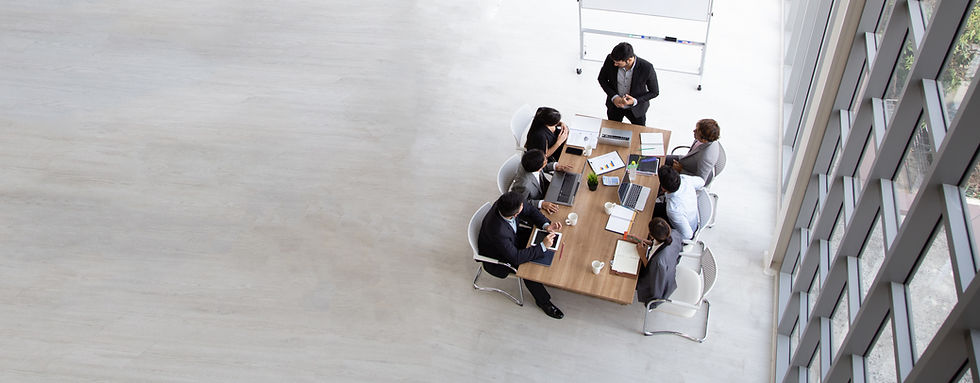Generative and Stagnant Periods: A Rhythmic Framework for Life, Design, and Meaning
- MA Emma Kocmanek Dikyova, DipArt

- Mar 2, 2024
- 3 min read
Generative and Stagnant Periods: A Rhythmic Framework for Life, Design, and Meaning
In a world obsessed with productivity, procrastination is often demonized and focus celebrated. But human development isn’t a race; it’s a rhythm. As psychologist Erik Erikson first proposed, we live through alternating phases—generativity and stagnation. These aren’t just developmental milestones but recurring internal climates that shape our mental health, creativity, and sense of meaning.
Understanding and integrating these cycles can help us not only navigate life's ups and downs, but also design more intentional lives.
The Psychology of Generativity and Stagnation
Generativity, as described by Erikson (1950), reflects the urge to contribute to society and future generations. Whether through parenting, innovation, mentoring, or meaningful projects, it’s a phase rich with motivation, inspiration, and energy.
Stagnation, on the other hand, can feel like being stuck in molasses. A loss of focus, a drift in purpose, or an emotional fog. Yet, neuroscience reminds us that these states are not failures—they are recalibrations.
Periods of low output often coincide with increased activity in the brain’s default mode network, which is linked to self-reflection, future planning, and emotional intelligence (Raichle et al., 2001). In short, what looks like “doing nothing” may actually be our mind preparing its next move.
Designing for Rhythm: The Role of Environment
Environmental psychology tells us that our spaces either amplify or ease these internal states. Elements like light, color, and spatial arrangement can subtly influence mindfulness, self-esteem, and overall wellbeing (Kaplan & Kaplan, 1989). For example, cluttered, overstimulating environments can intensify procrastination, while intentional, calming spaces can support resilience and self-care.
This is the heart of neurodesign—merging neuroscience and aesthetics to shape environments that promote mental clarity and creative flow.
These principles extend into lifestyle as well. During generative periods, we may find ourselves instinctively creating vision boards, setting goals, and surrounding ourselves with affirmations or motivational quotes. These tools externalize gratitude, values, and future aspirations—essential anchors during times of flux.
Healing Through Natural Cycles
Stagnation invites stillness. It can feel uncomfortable, especially in a culture that prioritizes visible progress. Yet, healing often occurs in these quieter intervals. Just as in nature, the soil needs to lie fallow for future growth, and the same is true for us.
Research into mindfulness and adaptability suggests that accepting rather than resisting these internal cycles improves both emotional regulation and long-term motivation (Kabat-Zinn, 2003; Dweck, 2006). Developing a growth mindset allows us to see stagnation not as a setback, but as preparation.
Moreover, integrating empathy—both toward ourselves and others—during these slower seasons can deepen relationships and even strengthen teamwork, whether at home or in shared professional spaces.
Life as a Design Project
This cyclical lens aligns with the philosophy behind Life Philosophy Design, which integrates psychology, neuroscience, and design to encourage a more intuitive, meaningful approach to living.
Rather than forcing constant output, this perspective asks:
What season am I in? And what kind of life am I quietly designing through my thoughts, habits, and environments?
This design-first mindset shifts the emphasis from performance to presence—from doing more to becoming more.
Conclusion
Life isn’t a linear project; it’s a layered composition of motivation, pauses, resilience, and reflection. Generative and stagnant periods are not opposing forces, but necessary partners in a life lived with integrity and rhythm.
By aligning with these natural cycles, designing our surroundings mindfully, and grounding our actions in purpose, we allow ourselves to thrive in both bloom and rest.
Selected References
Erikson, E. H. (1950). Childhood and Society.
Csikszentmihalyi, M. (1990). Flow: The Psychology of Optimal Experience.
Kaplan, R., & Kaplan, S. (1989). The Experience of Nature: A Psychological Perspective.
Raichle, M. E., et al. (2001). A default mode of brain function. PNAS.
Kabat-Zinn, J. (2003). Mindfulness-Based Interventions in Context.
Dweck, C. S. (2006). Mindset: The New Psychology of Success.



Comments